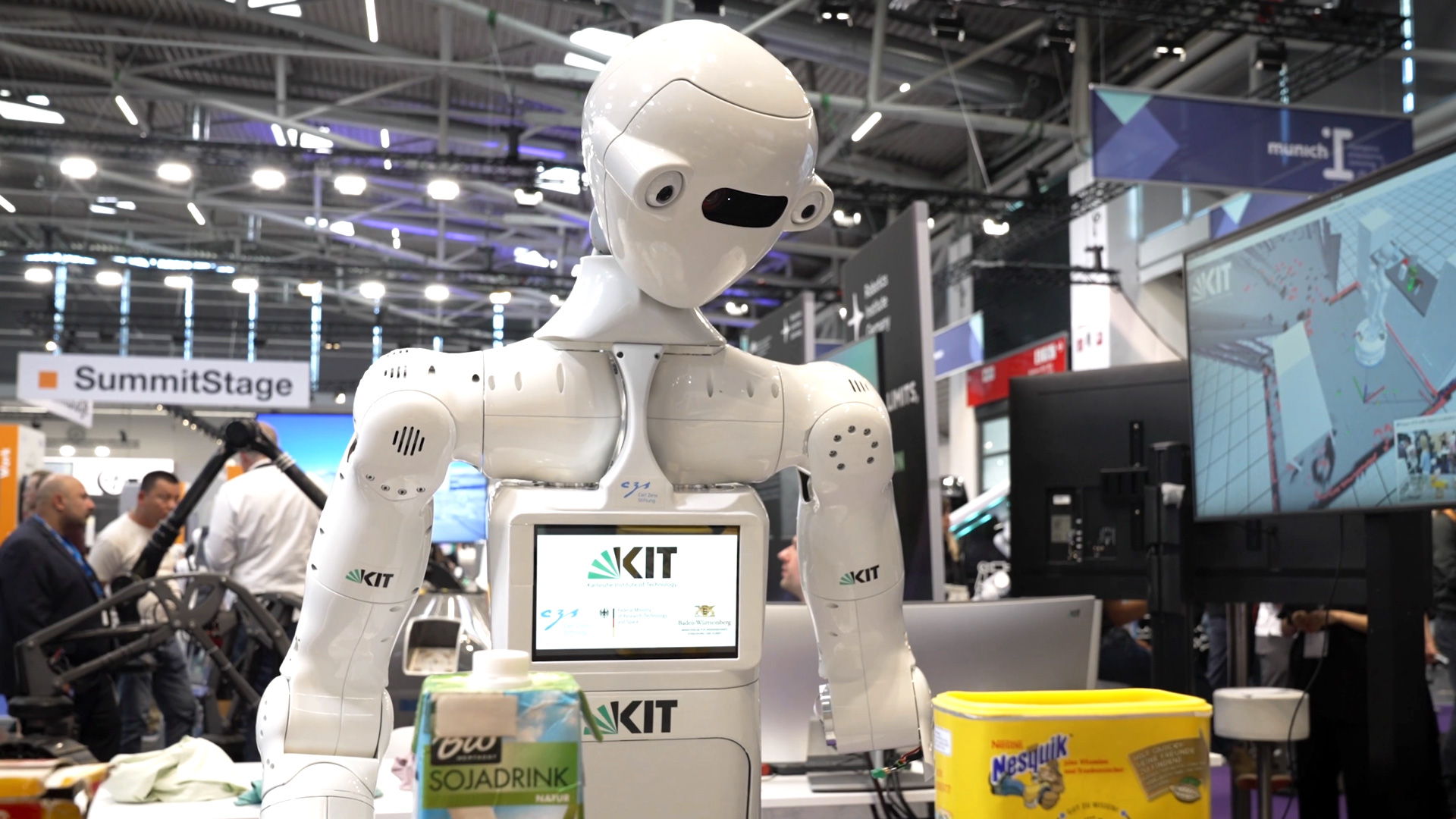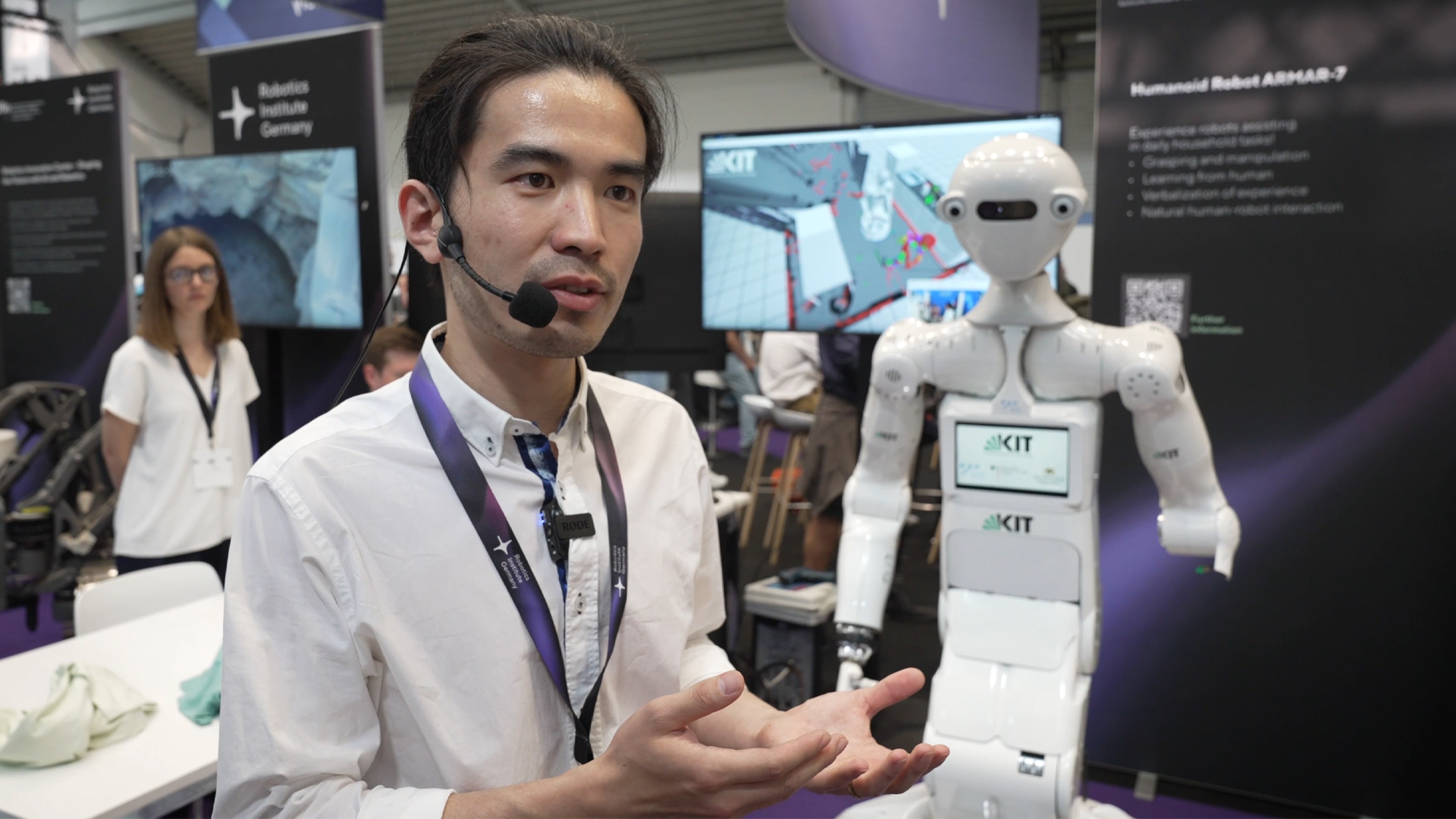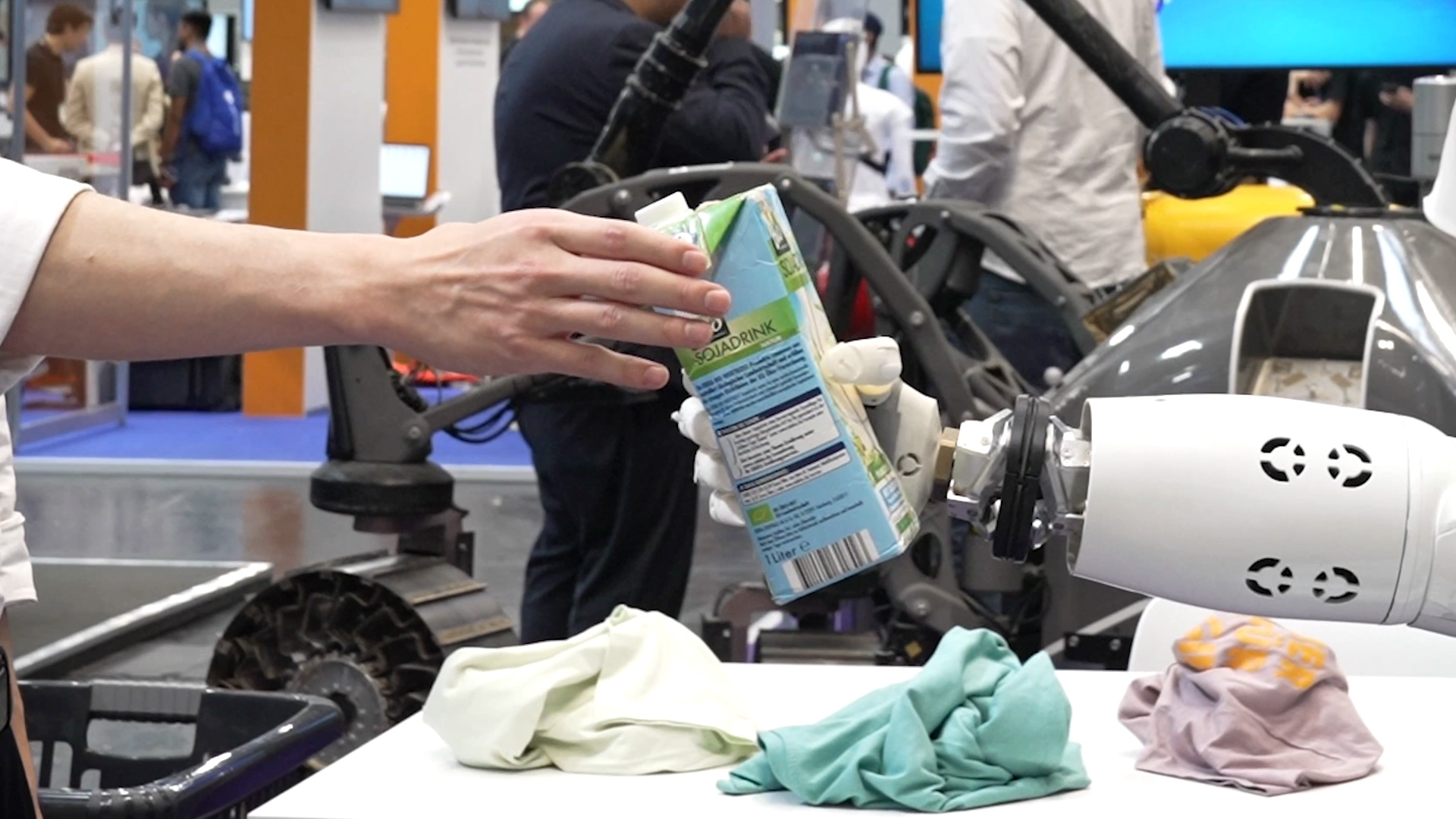ARMAR-7 is the latest humanoid robot from the Karlsruhe Institute of Technology (KIT). It is already the seventh generation in this series, which aims to support people in their everyday lives in the future.
The project is about more than just trying to build arms and grippers that move. Researchers are working to develop robots that can understand movement sequences through observation and independently transfer them to new situations.
In concrete terms, this means that ARMAR-7 observes demonstrations by humans and “learns” from them. If it is shown how to pick up an object from a table or open it, it can later reproduce this action independently. It even adapts to new scenarios.

The robot combines visual information, stores the positions of objects, and remembers its own movement sequences. The goal is for it to not only imitate tasks, but also adapt them independently.
Another important component of the project is voice input. The robot understands verbal commands such as “Look at the counter” or “Bring me the milk.” For this to work, ARMAR-7 must be able to translate voice signals into specific action goals and access previously stored location and object information. It recognizes the voice command, compares it with its internal memory, and then uses cameras and image processing to locate the desired object.

The researchers at KIT demonstrate how ARMAR-7 identifies a milk carton on a table. It registers the shape and position, moves its arm precisely to the location, and grabs the carton. This process is the result of numerous learning cycles in which the robot was trained using human movements.
But it doesn't stop at language and vision. ARMAR-7 is designed to recognize human intentions. To this end, an interactive human-robot interface has been developed that enables the robot to interpret body language.

If a person extends their hand, ARMAR-7 tries to understand this as a request and hand over the object. What is interesting here is that the robot does not execute rigid programs, but reacts dynamically. If, for example, it loses contact with the object while placing it, it recognizes this and tries again.
Small uncertainties are intentional – they show whether ARMAR-7 can make corrections in real time. It is precisely this ability that distinguishes it from classic automation systems, which would stubbornly work through a predefined sequence.
The developers at KIT see numerous possible applications: from everyday household tasks to assistance functions in care facilities or hospitals. It is precisely in these areas that a humanoid robot could take over tasks that are physically demanding or simply repetitive. Such a helper would also be conceivable in the care of elderly people.

The focus is not only on the hardware, i.e., mechanical arms, sensors, and motors. The so-called cognitive architecture is particularly important. It ensures that ARMAR-7 not only masters individual movements, but also understands the context in which they occur. Recognizing objects, remembering positions, documenting actions, and restarting independently in the event of errors—all this is part of the package.
A remarkable aspect of the project is that the researchers at KIT are making their work publicly available. Publications and code are published as far as possible so that other institutes and developers can build on them. This is intended to accelerate global research and promote solutions that will ultimately benefit everyone.
Participation in events such as the Robotics Institute Germany is also important for this reason. There, robotics experts from different countries come together to share challenges and discuss common goals. The exchange of knowledge thus becomes a multiplier for bringing humanoid robots such as ARMAR-7 more quickly from the laboratories into real-world environments.